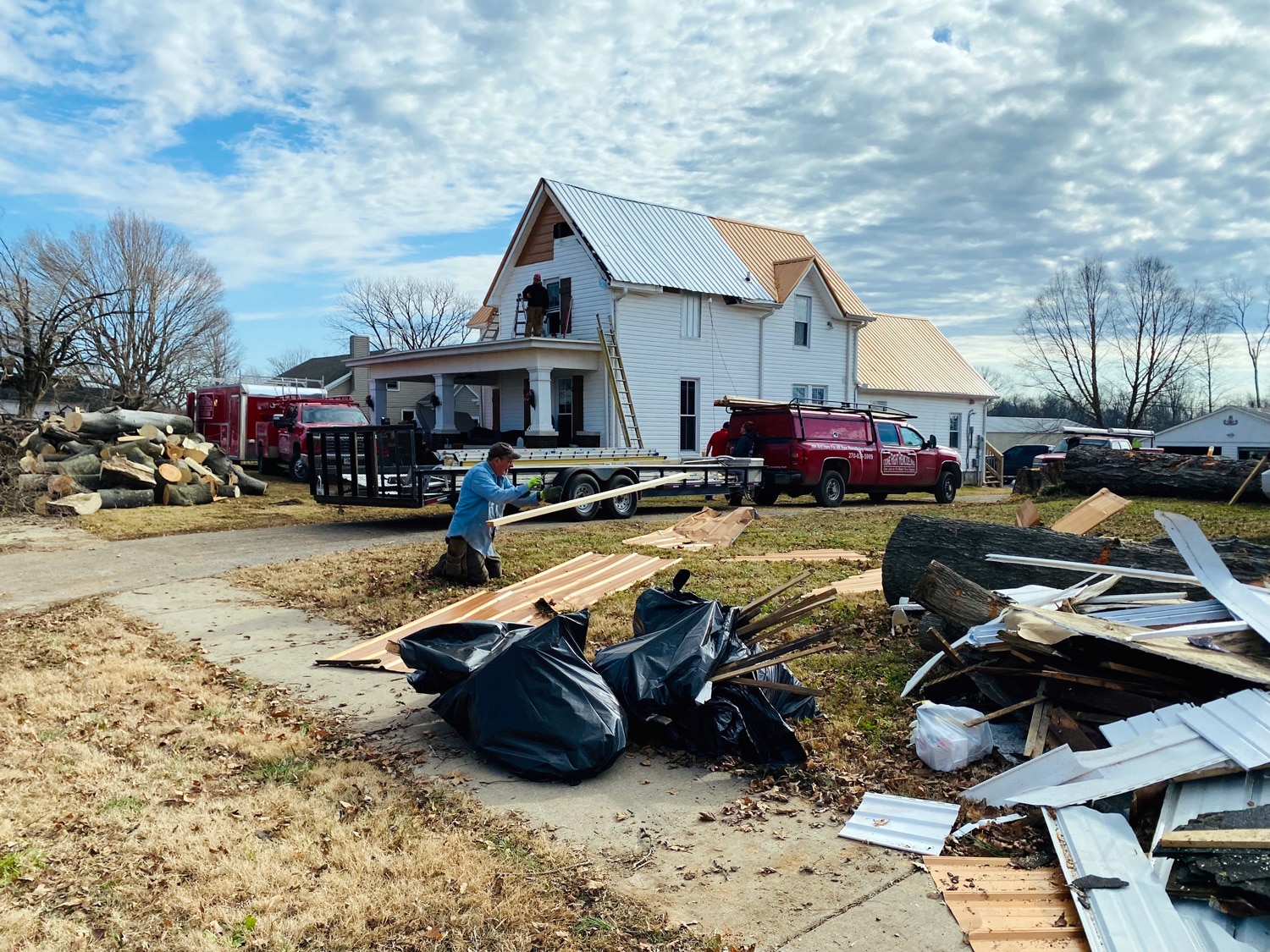Last year, 58 major natural disasters hit the United States. Twenty-one of those disasters caused $1 billion or more in damage, making 2021 the third costliest year for natural disasters, according to the National Oceanic and Atmospheric Administration. Last year’s were also the deadliest since 2011.
Nearly half of those billion-dollar disasters—including floods, freezes, hurricanes, and tornadoes—occurred in the South: Severe flooding hit Tennessee and Kentucky; landslides and mudslides happened in Virginia; a major hurricane devastated the Gulf Coast and a tropical storm slammed North Carolina’s coast.

Barely a month into 2022, there were already four major declared disasters: flooding and mudslides in Alaska and Washington and tornado outbreaks in Missouri and Tennessee. Most of them actually occurred in 2021; the White House declared emergency declarations that allow FEMA to start providing immediate aid, but didn’t declare a “major disaster” requiring long-term aid until nearly a month later.
When a major disaster strikes, states and tribal governments often rely on federal funding to recover from a crisis. Rebuilding homes and schools, fixing roads, power lines and sewer systems can take a toll far beyond a city or county’s budget.
But securing that money from the federal government often takes months, and distributing it to people who need it the most can take many more months, if not years.
A difficult approval process
Local emergency managers and public officials first have to work with the Federal Emergency Management Agency (FEMA) to carry out a “preliminary damage assessment,” creating a cost estimate for the work ahead of them. Without this step, states won’t qualify for long-term federal aid. The assessment, according to FEMA, should “show that the disaster is of such severity and magnitude that effective response is beyond the capabilities of the State and the affected local governments or Indian tribal government.”
For example, seven tornadoes swept across the western and middle parts of Tennessee in late December. More than 150,000 people lost power during the storms’ peak, and four people died. The federal government issued an emergency declaration in the immediate aftermath of the storm, allowing FEMA to approve $824,697 in emergency aid for individuals and households. But it wasn’t until nearly a month later, in January, that the White House approved a major disaster declaration that now opens up FEMA aid for long-term recovery aid.
In extreme cases, the president may expedite a disaster declaration without having to catalog the full cost because damages are so widespread and severe. In Kentucky, the same storm leveled entire towns to the ground, caused rivers to flood, and killed at least 74 people.
States or tribal governments may decide that the extent of a disaster isn’t large enough to warrant a damage assessment — or they might apply, and not qualify for additional aid. Residents aren’t eligible to apply with FEMA for funds to repair homes, pay for rent, or replace damaged property, said Jennifer Trivedi, a professor at the University of Delaware’s Disaster Research Center.
The federal government can disagree with the damage assessment that a state submits, and can deny requests for aid. In 2017, North Carolina asked FEMA for $900 million in recovery funds after Hurricane Matthew hit that October. The federal government only allotted $6 million — less than 1% of the state’s request. Former President Donald Trump’s administration didn’t provide a reason for the rejection, which North Carolina’s governor tried to appeal.

Federal aid can be stalled by political fights in Congress, too. “The money that goes into declarations isn’t money that’s already been set aside,” Trivedi said. “It’s not that there’s a $10 million pile of money that we can pull out of when we have a disaster. There can be tension about voting on certain issues, because disasters can get costly—particularly when we’re talking about multiple events happening in a year, when you have disasters stack up, you’re talking about billions and billions of dollars.”
In 2013, every senator and representative from Texas voted against a recovery package for Hurricane Sandy, which devastated New York and New Jersey. Though the aid passed, four years later, East Coast politicians accused the Texas delegation of hypocrisy as they pushed through billions of dollars in aid after Hurricane Harvey. For U.S. territories like Puerto Rico with no representation in Congress, securing aid is even harder, and the White House can place restrictions on funding at its discretion.
Too much red tape
Every state allocates money to counties and residents through different agencies, and there’s some leeway in how it is spent. The Department of Housing and Urban Development, which makes long-term recovery grants through a program called Community Development Block Grants, maintains a list of “slow spenders” who aren’t on track to use up the money by specified deadlines. Several agencies in disaster-prone Southern states, like Texas, Louisiana, Mississippi and Alabama, are on that list. State and local agencies, and the communities they serve, often disagree about what projects to prioritize. They can reroute money from urban areas to rural ones, or funneling money towards economic development projects over low-income housing recovery.
- RELATED: FEMA disaster aid deadline extended to March
- RELATED: FEMA denials frustrate Kentucky tornado survivors
The process to allocate and distribute funding can take so long that new disasters strike in the meantime. In September 2021, Congress approved $28 billion to help Louisiana recover from Hurricanes Zeta, Delta, and Laura in 2020. Hurricane Ida struck Louisiana a month before the funding was approved. It was the fourth major hurricane in two years. Residents are still in limbo as the process starts all over again. By the time hurricane season rolls around again in June, recovery money for Ida might not be allocated.
As climate change makes disasters more frequent and damaging, there’s an urgent need to ensure communities are resilient for the future, while also helping them fully recover from previous storms.
But there’s no silver bullet to streamline the process between a disaster hitting a community and money reaching the individuals who need it most. “The problem becomes that there are multiple small things that can add up and cause delays,” Trivedi said. Homeowners and renters may still be caught up in red tape for years with their insurance companies or charities that offer grants and loans in addition to FEMA. “You can’t point to one thing, and say, ‘If we fixed this one thing, you could rebuild faster.’ It’s like death by a thousand paper cuts.”
This article first appeared on Southerly and is republished here under a Creative Commons license.






